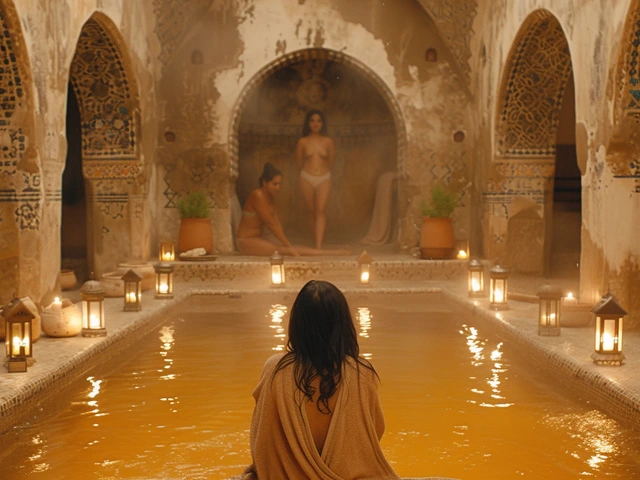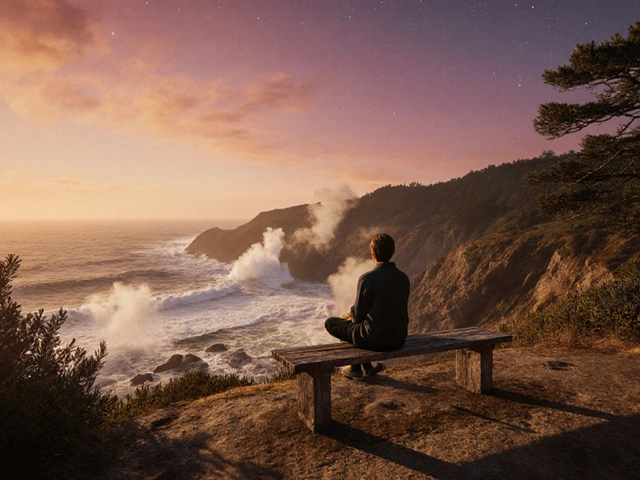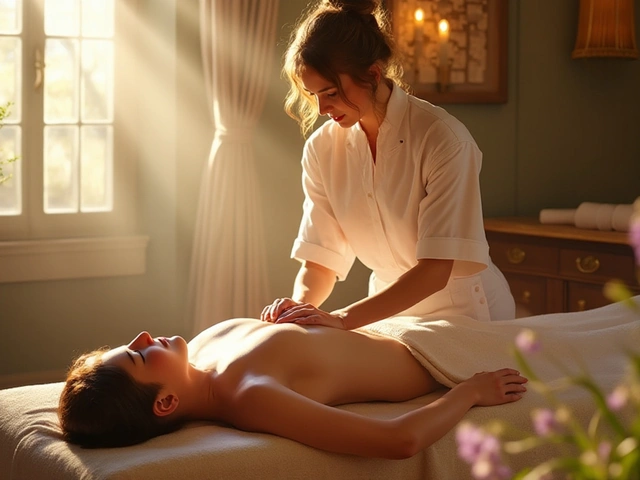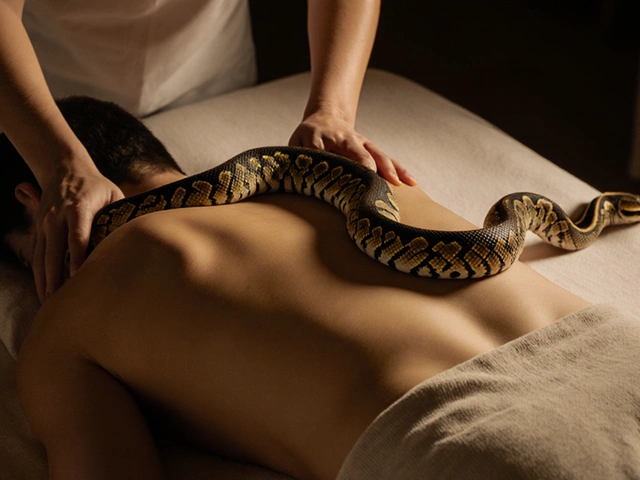Stone Therapy Guide: Benefits, Techniques & FAQs
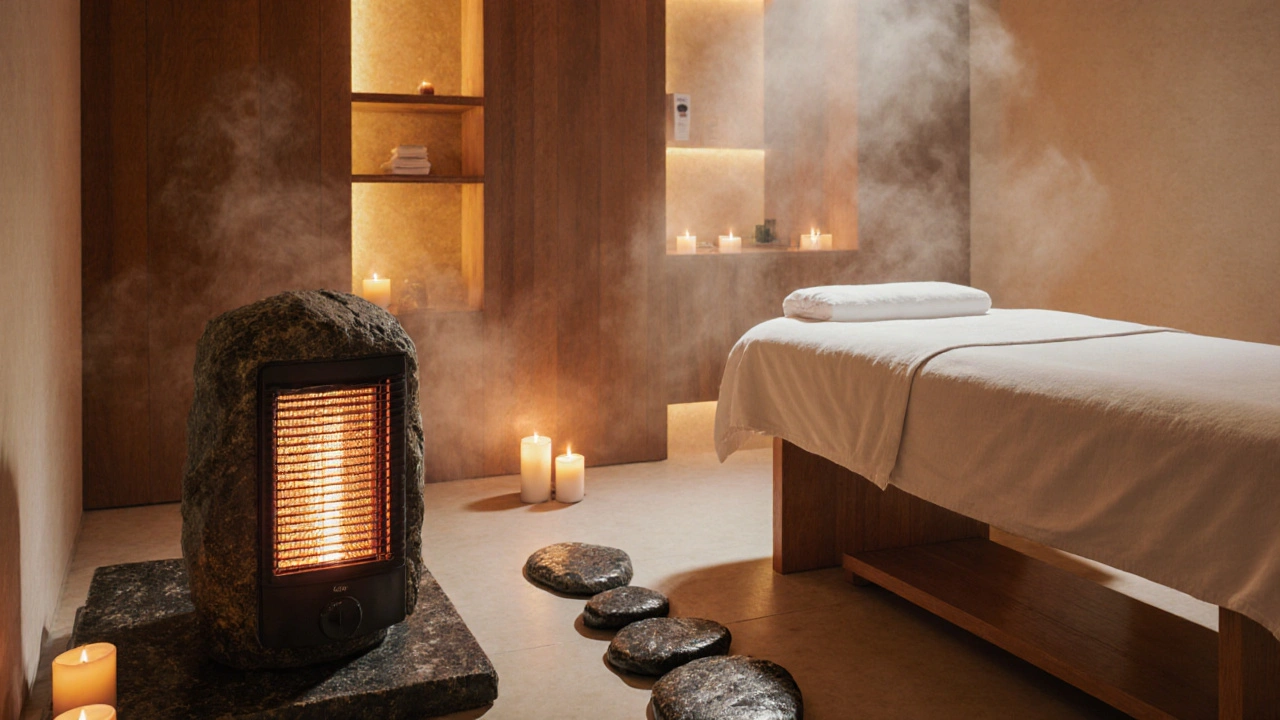
Stone Therapy Modality Selector
Find the Right Stone Therapy for You
Answer a few questions to determine which stone therapy modality is best suited for your needs and health conditions.
Ever wondered why spas line their treatment rooms with heated rocks or why some people carry smooth crystals in their pockets? The answer lies in stone therapy, a practice that blends heat, pressure, and the natural energy of minerals to soothe body and mind. Below is a hands‑on walkthrough that covers everything you need to know-from origin stories to what to expect in a modern session.
What Is Stone Therapy?
Stone Therapy is a holistic treatment that uses heated or cooled stones, as well as crystal tools, to promote relaxation, improve circulation, and balance energy. While the term often brings hot stone massage to mind, the umbrella includes cold stone therapy, crystal healing, and even stone‑based reflexology. The common thread? Using the physical properties of minerals-temperature, weight, and vibration-to trigger physiological responses.
Historical Roots and Cultural Context
The practice dates back centuries. Ancient Romans used heated basalt slabs to ease muscular tension after battles. In traditional Chinese medicine, smooth jade rollers were employed to stimulate meridians. Indigenous Australian communities, especially in the Outback, placed warm river stones on sore joints, believing the earth’s energy could accelerate healing. Over time, these regional customs merged with Western massage techniques, giving rise to the contemporary forms you see in spas worldwide.
Core Techniques: Hot, Cold, and Crystal
Three main modalities dominate stone therapy today. Understanding their differences helps you pick the right experience for your goals.
- Hot Stone Massage uses basalt stones heated to 50‑55 °C (122‑131 °F). The therapist slides the stones over muscles, allowing deep heat to relax tight fibers and increase blood flow.
- Cold Stone Therapy employs chilled stones, often quartz or marble, kept at 5‑10 °C (41‑50 °F). The contrast of cold can reduce inflammation, numb pain, and invigorate the nervous system.
- Crystal Healing incorporates gemstones like amethyst, rose quartz, or hematite. Practitioners place them on energy points, believing each crystal emits a unique vibrational frequency that can align chakras and promote emotional balance.
Physical Benefits Backed by Research
Multiple studies have measured the impact of stone therapy on specific health markers. A 2022 trial published in the Journal of Massage Science found that participants receiving hot stone massage experienced a 22 % reduction in systolic blood pressure compared to a control group. Another study on cold stone applications reported a 15 % decrease in post‑exercise muscle soreness.
Key physiological perks include:
- Improved circulation: Heat dilates blood vessels, delivering oxygen and nutrients more efficiently.
- Enhanced muscle flexibility: Warm stones allow deeper stretching without triggering a pain response.
- Reduced cortisol levels: The combined effect of heat, pressure, and rhythmic movements lowers stress hormones.
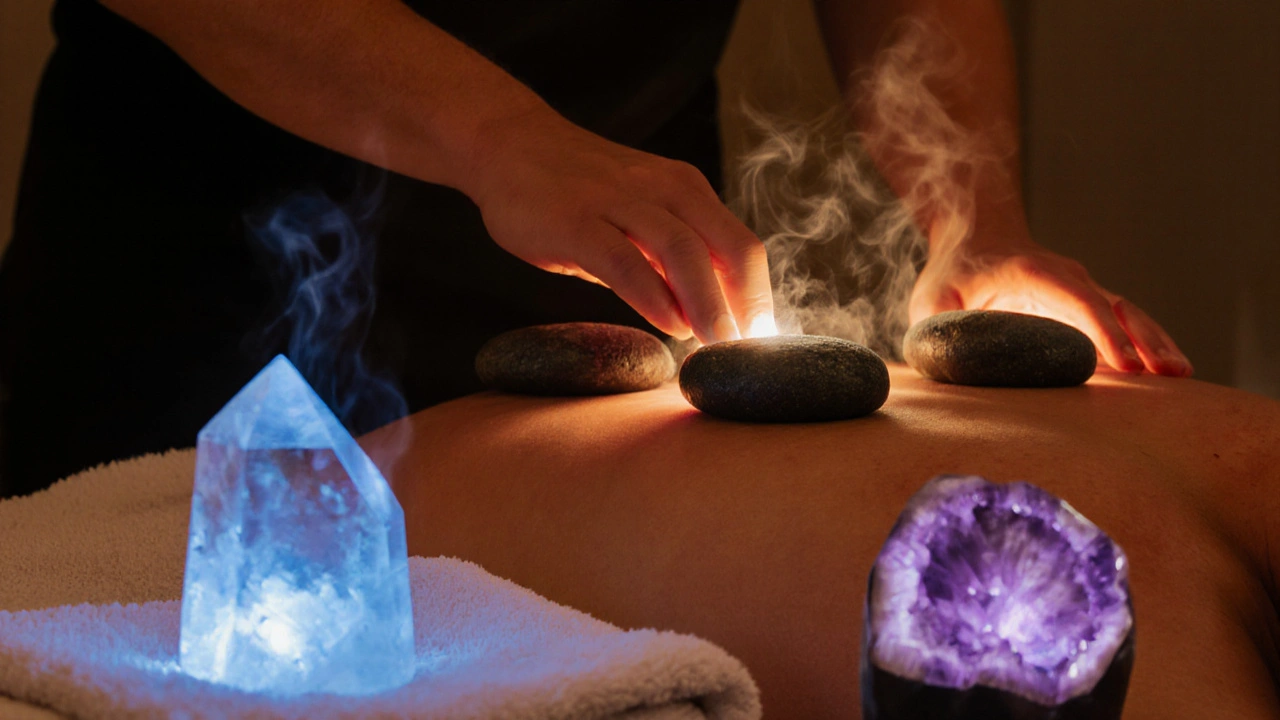
Mental and Emotional Upsides
Beyond the body, stone therapy can calm the mind. The tactile sensation of smooth stones and the meditative rhythm of a therapist’s hands trigger the parasympathetic nervous system, which slows heart rate and promotes a sense of safety. Users often report better sleep, clearer focus, and a lingering feeling of “groundedness” after a session.
What to Expect in a Typical Session
Here’s a step‑by‑step rundown of a standard 90‑minute hot stone massage, which is the most common format in Australian spas.
- Consultation: The therapist asks about medical history, injuries, and your preferences (heat level, areas of focus).
- Stone Preparation: Basalt slabs are heated in a stone heater and checked with a thermometer to stay within the safe range.
- Initial Warm‑Up: The therapist places a few heated stones on the back, neck, and shoulders, allowing the heat to penetrate for 2‑3 minutes.
- Full‑Body Massage: Using long strokes, the therapist moves the stones along muscle groups, interspersed with traditional hand techniques.
- Finishing Touch: Remaining stones are used for gentle rocking motions, then the therapist removes them and performs a brief stretch.
- After‑Care: You’re offered water and advice on post‑session stretching or hydration.
If you opt for cold stone or crystal work, the sequence is similar, but the therapist will swap the heater for a cooler and may pause longer between placements to let the temperature shift feel balanced.
Choosing a Qualified Practitioner
Not every massage therapist can safely deliver stone therapy. Look for these credentials:
\n- Certification from a recognized body such as the Australian Association of Massage Therapists (AAMT) or a specialized stone‑therapy program.
- Training in contraindications (e.g., open wounds, severe hypertension, pregnancy - especially the first trimester).
- Evidence of proper sanitation practices for stone handling.
Ask about the therapist’s stone source, too. Basalt from volcanic regions in New Zealand or locally sourced river stones in Adelaide are prized for their durability and heat retention.
DIY Stone Therapy at Home - Safe Tips
Want to bring the magic of stones to your living room? Here’s a quick guide, but remember that professional training ensures safety.
- Select the Right Stones: Use smooth, non‑porous basalt or marble. Avoid stones with cracks that could break under heat.
- Heat Safely: Place stones in a slow‑cook or a dedicated stone heater for 20‑30 minutes. Test temperature with the back of your hand; it should feel comfortably warm, not scorching.
- Use a Towel Barrier: Wrap each stone in a thin cotton towel to prevent direct skin burns.
- Limit Session Length: Stick to 30‑45 minutes for a self‑massage, focusing on large muscle groups like the back, thighs, and calves.
- Stay Hydrated: Heat can cause sweating; drink water before and after.
If you prefer the cool side, chill the stones in the freezer for 15 minutes and follow the same towel‑wrap routine.
Comparison of Popular Stone Modalities
| Aspect | Hot Stone Massage | Cold Stone Therapy | Crystal Healing |
|---|---|---|---|
| Primary Goal | Deep muscle relaxation and increased circulation | Inflammation reduction and nerve stimulation | Energy balancing and emotional release |
| Typical Temperature | 50‑55 °C (122‑131 °F) | 5‑10 °C (41‑50 °F) | Room temperature (no heat applied) |
| Best For | Chronic muscle tension, stress | Post‑exercise soreness, acute injuries | Emotional anxiety, chakra work |
| Contraindications | High blood pressure, varicose veins | Cold intolerance, Raynaud’s syndrome | Severe mental health conditions without professional support |
| Session Length | 60‑90 min | 45‑60 min | 30‑60 min |
Common Questions and Myths
Is stone therapy safe for people with heart conditions?
Heat can raise heart rate, so anyone with uncontrolled hypertension or severe heart disease should avoid hot stone sessions. Cold stone may be safer, but a medical professional’s approval is still recommended.
Do the stones need to be “charged” or cleansed?
Many practitioners rinse stones with mild soap and warm water before each use. Some also place them under moonlight or in salt to clear any residual energy, though this is more a matter of personal belief than scientific necessity.
Can I combine stone therapy with other treatments?
Yes. A popular combo is hot stone massage followed by aromatherapy or a gentle facial. Just ensure the therapist spaces out the treatments so the skin isn’t overstressed.
How often should I schedule stone therapy?
For general wellness, once a month works well. If you’re using it for chronic pain, a bi‑weekly schedule may be more effective, always guided by a qualified therapist.
What’s the price range in Australia?
In major cities like Adelaide or Sydney, a 90‑minute hot stone massage typically costs between AUD 120 and 180. Cold stone and crystal sessions may be slightly cheaper, ranging from AUD 90 to 150.
Wrapping Up: Should You Try Stone Therapy?
If you crave a blend of physical relief and a meditative vibe, stone therapy delivers both. Its roots are ancient, yet modern research backs many of its claims. Whether you book a session at a local spa, attend a holistic retreat, or experiment with a few stones at home, the key is to stay informed, respect contraindications, and choose a qualified practitioner. Give it a try and feel the steady, grounding rhythm of the earth beneath your skin.

